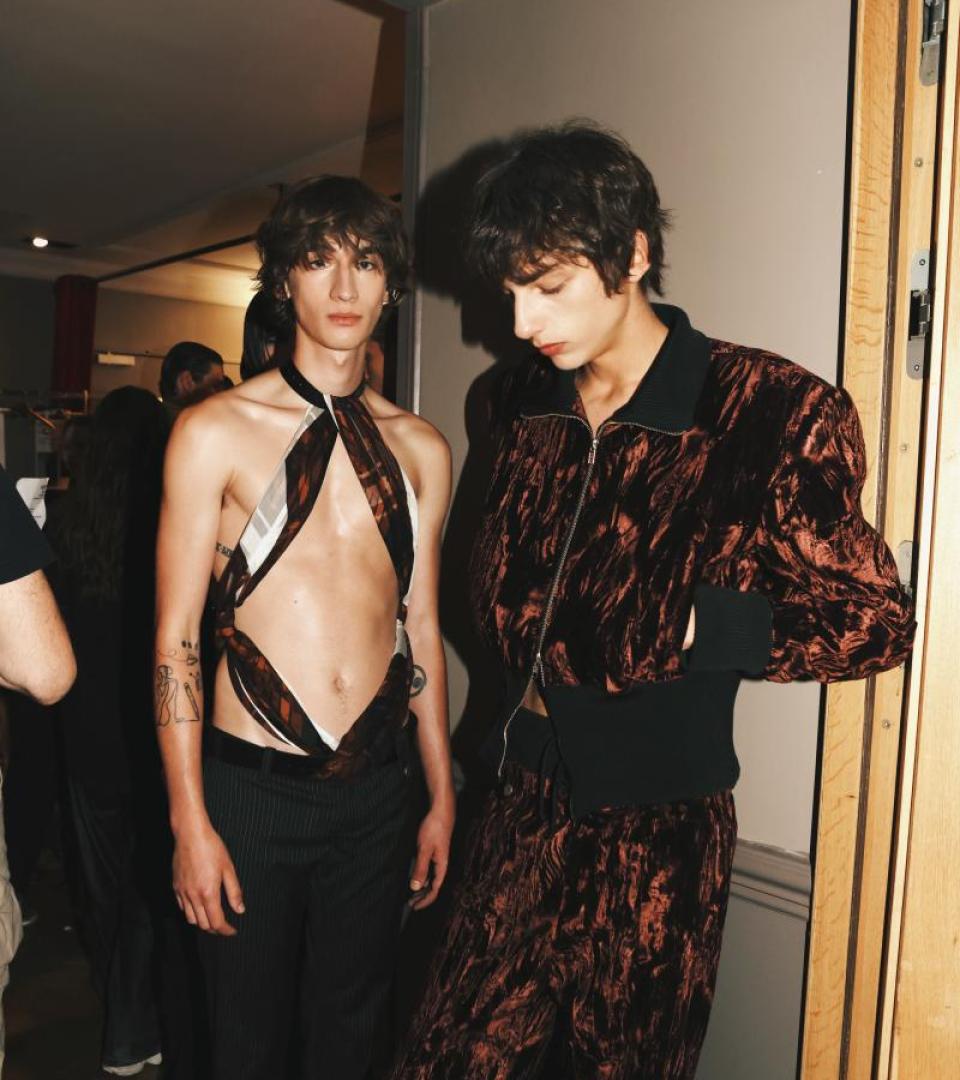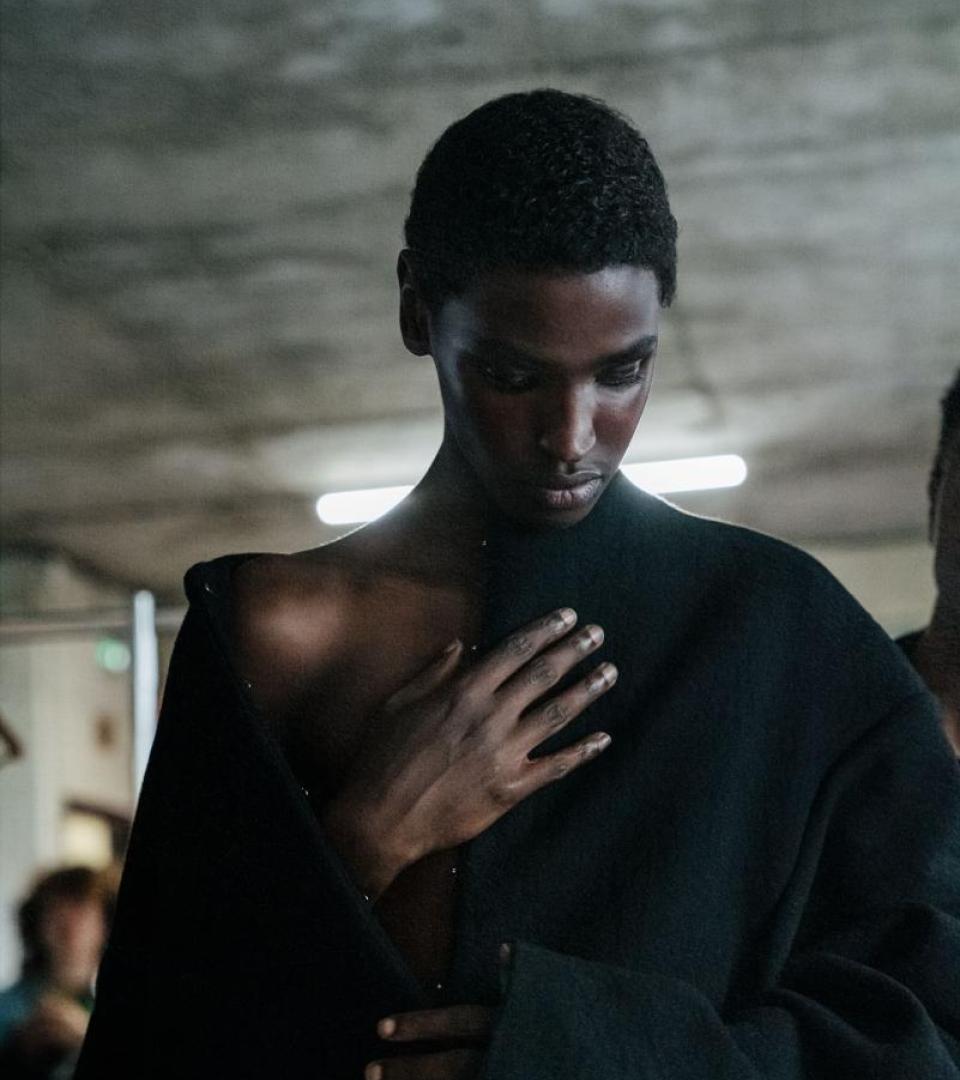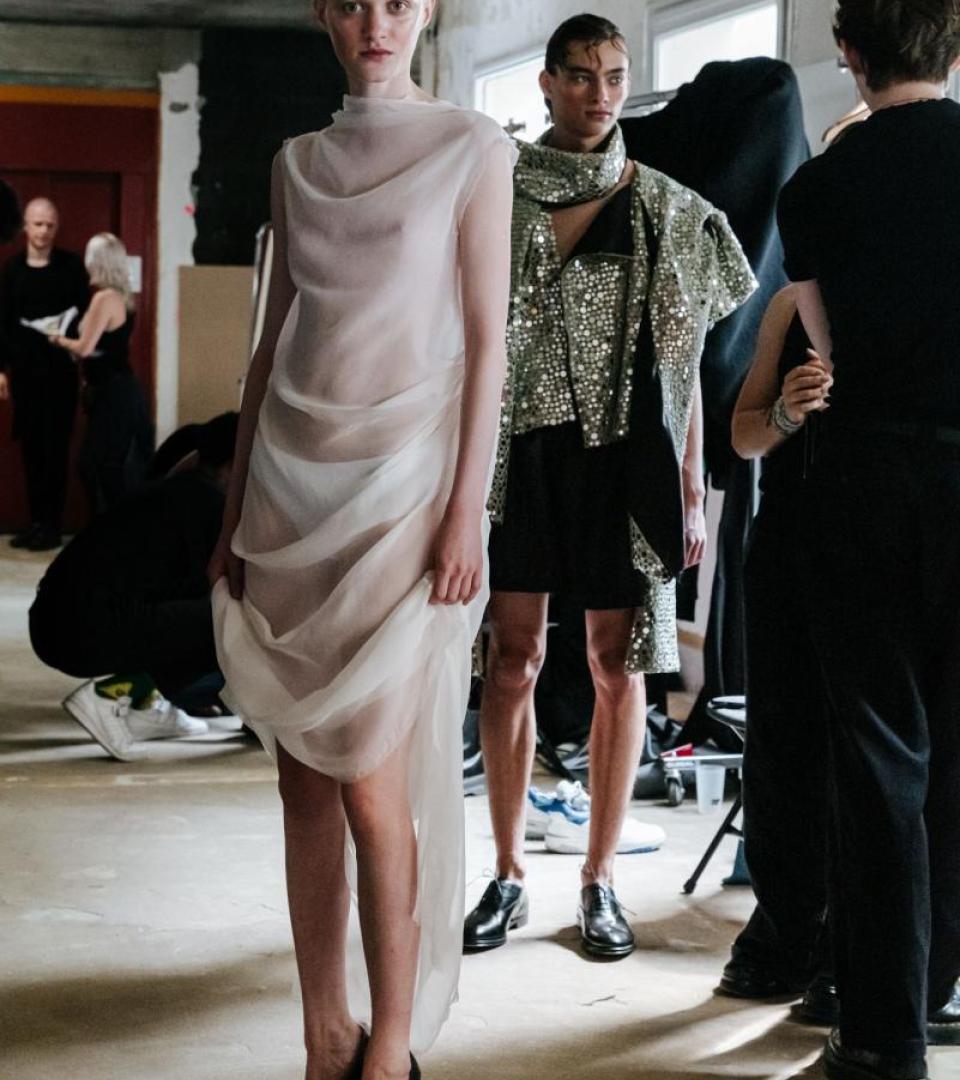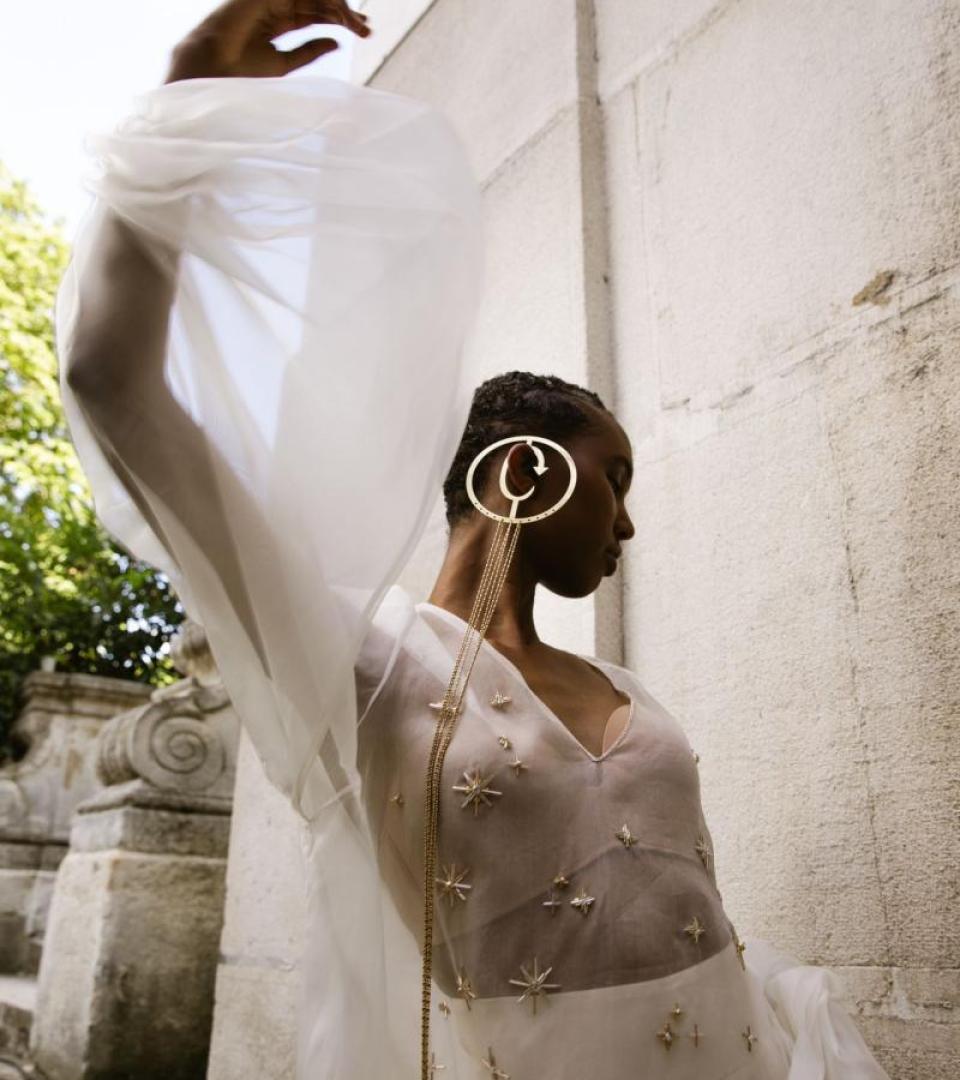Through a collection rich in colour and texture, Kumra continues to expand on his tailoring offering with dashing results. Kumra illuminates, elevates, and preserves Indian craftsmanship with references to silk scarves and antiques. With the store underway, Kumra has interior design on his mind and this has informed textural elements and patterns on the clothing. Showing sensitivity to the environment, most of the collection doesn’t require electricity since weaves are loomed by hand. Local artisans also hand-finish the embroideries that underscore the brand’s signatures. This season, these embroideries reference Hindu cosmology. The colours used in the collection are dyed with plants and herbs.
“If you take away the artisanal element and the access to craft, it’s just regular clothes,” said Kumra on a video call from his New Delhi studio.
What would you like us to know about the collection?
This collection was different from the last because we tried to reverse-engineer the collection from the lookbook and then figure out what the pieces would be from there. One thing about lookbooks photographed in India is that they are very traditional and lean heavily into nostalgia. The idea with this was to provide a different lens.
We shot the lookbook in an area of Ahmedabad in Western India, where Le Corbusier, and his mentee, B.V. Doshi, built some stuff. It’s a city that has become an industrial hub of sorts, but maybe 50 or 60 years ago, it was a cultural and architectural playground for Indian designers. We looked at Indian modernism, which was a movement from the 1960s through the ’80s, where there was a rejection of conventional Indian architecture and colonial architecture.
How have you progressed from your first collection to now?
When I participated in the LVMH Prize, I had just graduated two months earlier. I was making things that I felt comfortable producing. I was a college student: it was whatever I could get made. At that point, we couldn’t take many risks. In the last two or three seasons, we have a full team that produces the collection, and we’ve been able to reinvest money into the business so we’re able to experiment more. Now, there’s more tailoring than anything else. We’ve been building up a lot of interesting techniques too. I’m confident that our customer base will grow and the people that have supported us so far will continue to be interested in the product.
How essential is heritage and/or a distinctive identity in contributing to a brand’s success?
It’s pivotal to success. We focus on innovating silhouettes and helping people understand that the reason you’re investing in pieces from us is because there is a level of expertise with craftsmanship that you can’t get anywhere else.
Now, we need to keep that level of intricacy going as we scale. We’ve been able to do it so far. The clothes get more challenging [to make as our level of design improves]. The biggest thing we need to do is make sure the clothes remain as interesting and pure as possible.
We are based in New Delhi so we can take on a more challenging supply chain because we’re near the people who make our clothes. It’s a function of personal relationships. If you don’t speak the language it’s a huge barrier to accessing these people. You have to understand the culture – when the festivals are, if there is a family wedding – so you have to work around them.
What are you most excited about in 2025?
We’re opening a store in New York this year so I’ve been working on the interior design for that.
What defines men’s elegance in a contemporary context?
I don’t know if men’s elegance is something that I take into consideration fully because my work is partly informed by how I would like to dress. My personal style is more muted but it’s about bringing fashion back to an era that’s more interesting to me—like the 1990s. I’ve been collecting Yohji Yamamoto from 1992 to 1994. Despite not being couture pieces, these clothes have a similar level of effort—they don’t sacrifice craftsmanship. Naturally, working with natural fibres, local craftspeople, hand embroideries, these are techniques that lend themselves to a more elegant texture.
This interview has been lightly edited.



